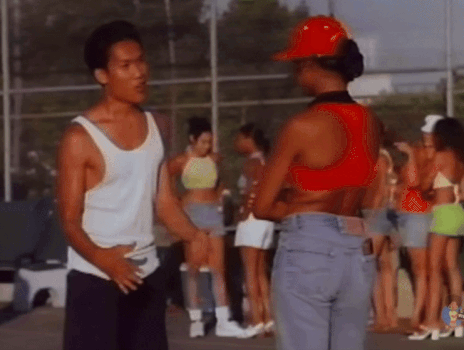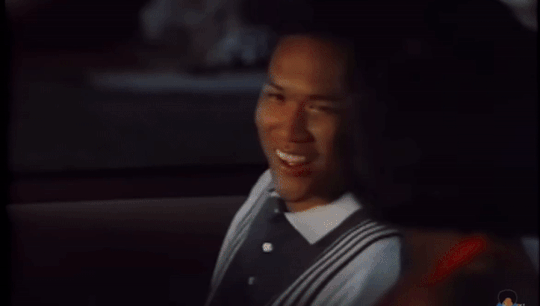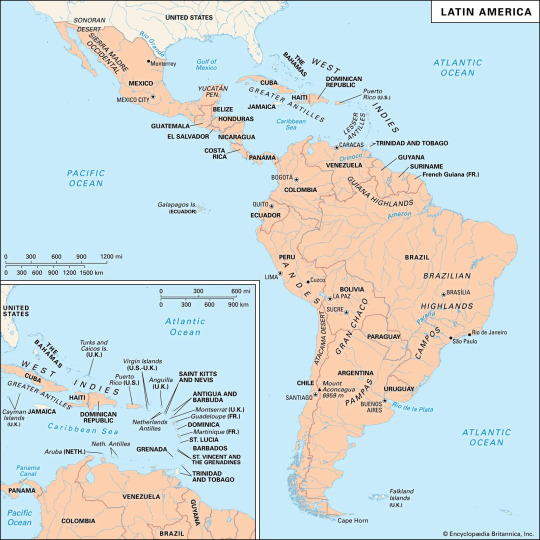#latino americans
Explore tagged Tumblr posts
Text
Noah Lanard at Mother Jones:
Two weeks after the election, I met Dianela Rosario in Huntington Park, California—an almost entirely Latino city that swung hard to the right this year. A 51-year-old Dominican American shopkeeper, Rosario told me that before this year she had never voted for a Republican presidential candidate. But, in 2024, inflation and the prices of groceries were front of mind. President Joe Biden and Democratic nominee Kamala Harris were not fully responsible for the cost of living crisis, she said, but she still wanted someone new.
“If she’s been vice president and there’s been no change, then I wasn’t sure she was going to be able to change things as president,” Rosario, who identifies as Afro-Latina, explained in Spanish about why she had not voted for Harris. “That’s what influenced me the most—that things might stay the same as they are now.” Earlier that afternoon, a Guatemalan shopkeeper shared a similar perspective. She told me she missed the lower prices of Trump’s first term and that she hoped the incoming president would deport people she saw as causing problems in the area. Unlike Rosario, though, she hadn’t been able to cast a vote. “Soy ilegal,” the shopkeeper explained of her own immigration status. In 2016, stories like these would have been hard to find in cities in Southeast Los Angeles like Huntington Park, where 97 percent of residents are Latino. That year, Trump lost by huge margins. In 2016, Hillary Clinton received 84 percent of votes in the area, compared to only 8 percent for Trump. Sometimes, Trump even came in third; in several precincts, Jill Stein was the runner-up to Clinton.
Eight years later, a Mother Jones analysis of precinct-level voting data shows that Democrats have lost more support in Southeast Los Angeles than any other part of Los Angeles County. Democrats’ combined margin of victory in nine cities in the area, which are more than 90 percent Latino on average, has declined by nearly 40 percent since 2016. Trump has gone from getting less than 10 percent of votes to nearly 30 percent. This is not just a function of Democrats staying home. Trump received more than three times as many votes this year in Southeast Los Angeles than he did during his first presidential run. While the data makes clear that voters in largely working-class Latino areas have moved right, the results do not reveal how individual Latinos who live in more mixed (and often richer) parts of Los Angeles voted. Compared to Southeast Los Angeles, Democrats’ have lost less support since 2016 in more middle-class majority-Latino cities, although those cities remain more conservative overall.
Still, a national trend—working-class Asian and Latino voters shifting to Republicans, and upper-class voters choosing Democrats—can be seen in miniature in Los Angeles County.
The results in Southeast Los Angeles mirror the dramatic drops in Democratic support in heavily Asian and Latino areas across the country, ranging from the border counties of Texas' Rio Grande Valley to the rural towns of California's Central Valley to urban areas of New York and New Jersey. While some of these losses have been offset by gains among affluent college graduates who once voted Republican, it was not enough for Harris to win. The voting records analyzed by Mother Jones include results for roughly 170 communities. Since 2016, Democrats’ margin of victory has dropped by at least 25 points in about 40 of those places, which is well above the countywide shift of about 17 points during the period. In nearly every single community with that large of a drop, Latinos and Asians comprise a majority of residents. The main exception is Beverly Hills, a famously affluent area with a large Jewish population. (Most of the shift in Beverly Hills happened between 2016 and 2020—meaning that it was not primarily a reaction to how Democrats discussed October 7 and Israel's military campaign in Gaza.) Karina Macias, the mayor of Huntington Park, said in a phone interview that the shift to the right among her constituents reflected concerns with issues that voters across the country prioritized: price increases, crime, and immigration. Macias noted a significant uptick in the number of families in Huntington Park who rely on food distributions, including among residents who probably would have never considered seeking help in the past.
“I think a lot of people were looking at their current economic situation, and [were] pissed off about it," Macias said. "Can you blame them? No, right? Especially in a community like Huntington Park, they feel it. They’re paying a lot more for things and are not necessarily being paid a lot more. If they work two jobs, maybe somebody in the household needs to go and get another job, right? We have a lot of families here that are doubling up in an apartment, and that’s how they get by."
The nearly 40-point shift in Southeast Los Angeles is far different from what has happened in some of the wealthier communities in Los Angeles. In the affluent coastal cities of Manhattan Beach, Redondo Beach, and Hermosa Beach, Democrats have maintained or slightly improved their margin of victory since 2016. But these voters did not necessarily back Democratic candidates all the way down the ballot. In 2020, Los Angeles County voters elected George Gascón, a progressive Cuban-American district attorney defeated his more moderate opponent by seven points. After the win, a backlash began almost immediately. This year, Gascón still managed to secure the endorsement of the Los Angeles Times. But he ended up losing to Nathan Hochman, a comparatively tough-on-crime challenger who became an independent after running as a Republican for California attorney general office in 2022. Hochman won by 20 points—a 27 point swing from 2020. Wealthier cities like Manhattan Beach and Santa Monica moved harder against Gascón than most of the county, despite being the areas where Democrats had some of their best results at the top of the ticket. Santa Monica residents went from supporting Gascón by a nearly 2-to-1 margin in 2020 to backing Hochman. In Manhattan Beach, Gascón lost by about 50 points—nearly 40 points worse than he did there four years ago. It meant that there was an almost 80-point gap in the city between Harris and Gascón, even though both are Democrats.
[...] Another dynamic is a belief among some Latino voters that Venezuelans, who crossed the border in record numbers in recent years, and other people arriving today are different from them and their ancestors. Gustavo Arellano, a Los Angeles Times writer who covered the recent political history of Southeast Los Angeles earlier this year, told me before the election about how his cousins objected to "these new immigrants" and were turning Venezuelans into scapegoats. "Venezuelans they get free everything," Arellano said, paraphrasing his cousins. "Our parents, when they came here illegally, didn't get anything at all. They did it on their own." Arellano tells his relatives that "these immigrants are just like our parents" but they insist otherwise. Macias didn't hear this perspective too often, but did recall someone saying about recent arrivals: "They're demanding things, and we work for them." It also doesn't help that Democrats—largely as a result of Republican opposition—have been unable to deliver on their promises to provide legal status to family members of some of the voters now turning against them. An undocumented Salvadoran immigrant named Sam made that clear when we spoke in Huntington Park—even though he was one of the strongest Kamala Harris supporters I interviewed. "The Democrats had the opportunity to help us," Sam explained in Spanish. "They didn't do it. As a result, all the Hispanics that are scattered throughout the United States, who are now citizens, who can now vote, are making them pay."
While Los Angeles County, California provided hefty winning margins for the Democratic Party this election, there are blinking red lights that the Democrats ought to be concerned about: Heavily Hispanic and Asian areas, especially lower-income ones, swung hard to the right. Example: Voted handsomely for Hillary in 2016, modestly for Biden in 2020, and either narrowly for Harris or flipped to Trump in 2024.
#2024 Presidential Election#2024 Elections#2016 Elections#2016 Presidential Election#Kamala Harris#Donald Trump#Latino Americans#Asian Americans#Race#California#Los Angeles County#Los Angeles County California#Nathan Hochman#George Gascón
24 notes
·
View notes
Text
Christian Hip-Hop: A Generation’s Words
Author: John K. Wells This article first appeared in the Christian Research Journal, volume 38, number 06 (2015). The full text of this article in PDF format can be obtained by clicking here. For more information about the Christian Research Journal, click here. SYNOPSIS Hip-hop has an incredible built-in potential to be used as a vehicle to herald the gospel, teach doctrine, and lead people…

View On WordPress
#Biggie Smalls#chh#CHRISTAIN RAP#Christian Research Journal#christian-hip-hop#DJ Kool Herc#Drake#Eminem#HIP HOP#Hip-hop#Holy Hip Hop#jay z#Jesus#Kanye West#kb#Lacrae#Latino Americans#Michigan-born rapper NF#MUSIC#Nicki Minaj#rap#the church#Tribe Called Quest#Tupac
4 notes
·
View notes
Text

I think it be funny if people start doing lol.
0 notes
Text


#Books#florida#woc#native american#poc#gop#libraries#librarians#black literature#Mlk#rosa parks#latinx#latinos#schools#abuela#mlk jr#ron desantis 2024
29K notes
·
View notes
Text
Things Biden and the Democrats did, this week #27
July 12-19 2024
President Biden announced the cancellation of $1.2 billion dollars worth of student loan debt. This will cancel the debt of 35,000 public service workers, such as teachers, nurses, and firefighters. This brings the total number of people who've had their student debt relived under the Biden Administration to 4.8 million or one out of every ten people with student loan debt, for a total of $168.5 billion in debt forgiven. This came after the Supreme Court threw out an earlier more wide ranging student debt relief plan forcing the administration to undertake a slower more piecemeal process for forgiving debt. President Biden announced a new plan in the spring that will hopefully be finalized by fall that will forgive an additional 30 million people's student loan debt.
President Biden announced actions to lower housing coasts, make more housing available and called on Congress to prevent rent hikes. President Biden's plan calls for landlords who raise the rent by more than 5% a year to face losing major important tax befits, the average rent has gone up by 21% since 2021. The President has also instructed the federal government, the largest land owner in the country, to examine how unused property can be used for housing. The Bureau of Land Management plans on building 15,000 affordable housing units on public land in southern Nevada, the USPS is examining 8,500 unused properties across America to be repurposed for housing, HHS is finalizing a new rule to make it easier to use federal property to house the homeless, and the Administration is calling on state, local, and tribal governments to use their own unused property for housing, which could create approximately 1.9 million units nationwide.
The Department of Transportation announced $5 billion to replace or restore major bridges across the country. The money will go to 13 significant bridges in 16 states. Some bridges are suffering from years of neglect others are nearly 100 years old and no longer fit for modern demands. Some of the projects include the I-5 bridge over the Columbia River which connects Portland Oregon to Vancouver Washington, replacing the Sagamore Bridge which connects Cape Cod to the mainland built in 1933, replacing the I- 83 South Bridge in Harrisburg, Pennsylvania, and Cape Fear Memorial Bridge Replacement Project in Wilmington, North Carolina, among others.
President Biden signed an Executive Order aimed at boosting Latino college attendance. The order established the White House Initiative on Advancing Educational Equity, Excellence, and Economic Opportunity through Hispanic-Serving Institutions. Hispanic-Serving Institutions (HSIs) are defined as colleges with 25% or above Hispanic/Latino enrollment, currently 55% of Hispanic college students are enrolled in an HSI. The initiative seeks to stream line the relationship between the federal government and HSIs to allow them to more easily take advantage of federal programs and expand their reach to better serve students and boost Hispanic enrollment nationwide.
HUD announced $325 million in grants for housing and community development in 7 cities. the cities in Tennessee, Texas, Alabama, Florida, Nevada, New York and New Jersey, have collectively pledged to develop over 6,500 new mixed-income units, including the one-for-one replacement of 2,677 severely distressed public housing units. The 7 collectively will invest $2.65 billion in additional resources within the Choice Neighborhood area – so that every $1 in HUD funds will generate $8.65 in additional resources.
President Biden took extensive new actions on immigration. On June 18th The President announced a new policy that would allow the foreign born spouses and step children of American citizens who don't have legal status to apply for it without having to leave the country, this would effect about half a million spouses and 50,000 children. This week Biden announced that people can start applying on August 19, 2024. Also in June President Biden announced an easing of Visa rules that will allow Dreamers, Americans brought to the country as children without legal status, to finally get work visas to give them legal status and a path way to citizenship. This week the Biden Administration announced a new rule to expand the federal TRIO program to cover Dreamers. TRIO is a program that aims to support low income students and those who would be the first in their families to go to college transition from high school to college, the change would support 50,000 more students each year. The Administration also plans to double the number of free immigration lawyers available to those going through immigration court.
The EPA announced $160 million in grants to support Clean U.S. Manufacturing of Steel and Other Construction Materials. The EPA estimates that the manufacturing of construction materials, such as concrete, asphalt, steel, and glass, accounts for 15% of the annual global greenhouse gas emissions. The EPA is supporting 38 projects aimed at measuring and combatting the environmental impact of construction materials.
The US announced $203 million in humanitarian assistance for the people of Sudan. Sudan's out of control civil war has caused the largest refugee crisis in the world with 11 million Sudanese having fled their homes in the face of violence. The war is also causing the gravest food crisis in the world, with a record setting 25 million people facing acute food insecurity, and fears that nearly a million will face famine in the next months. This aid brings the total aid the US has given Sudan since September 2023 to $1.6 billion, making America the single largest donor to Sudan.
The Consumer Financial Protection Bureau put forward a new rule that would better regulate popular paycheck advance products. 2/3rds of workers are payed every two weeks or once a month and since 2020 the number of short term loans that allow employees to receive their paycheck days before it’s scheduled to hit their account has grown by 90%. the CFPB says that many of these programs are decided with employers not employees and millions of Americans are paying fees they didn't know about before signing up. The new rule would require lenders to tell costumers up front about any and all fees and charges, as well as cracking down on deceptive "tipping" options.
#Joe Biden#Thanks Biden#Politics#US politics#American politics#student loans#debt forgiveness#housing crisis#rent control#wage theft#sudan#sudan crisis#climate change#climate action#immigration#hispanic#latino#college#bridges#Infrastructure
1K notes
·
View notes
Text
Colleges are now educating their first waves of students who experienced pandemic learning loss in high school. What they are seeing is sobering, especially because the latest dismal results from the national exam of fourth and eighth graders suggest that they could face year after year of incoming students struggling to catch up. In almost all states, there were significant declines in eighth-grade math, and most states also showed a dip in reading for fourth and eighth graders.
In interviews across the country, undergraduates discussed how their disjointed high school experiences have trailed them in their first years of college; some professors talked about how grades are down, as well as standards. Many students are tentative and anxious.
For many low-income students and students of color, who have historically faced bigger obstacles to earning a degree, classes seem to be that much harder and graduating that much tougher.
As it is, in many states, high school graduation rates fell for the class of 2021. And undergraduate enrollment has declined 4.2 percent since 2020, according to preliminary data published recently by the National Student Clearinghouse Research Center.
Community colleges, facing precipitous drops among Black and Hispanic students, have struggled over the past two years to bring students back to the classroom.
The swirl of issues “all demonstrate that we’ve got a crisis,” said Stanley Litow, a visiting professor of public policy at Duke University and a former deputy chancellor of the New York City public schools.
It’s especially bad, he said, for low-income students and students of color. “The population that we’re most interested in doing the most for seems to be moving in the wrong direction,” he said.
— The Pandemic Generation Goes to College. It Has Not Been Easy.
#eliza fawcett#the pandemic generation goes to college. it has not been easy.#current events#education#covid 19#pandemic#lockdown#racism#poverty#class#usa#african americans#latino americans
0 notes
Text





Dante Basco and Tatyana Ali in Fakin Da Funk (1997)
#imanisaysboard#they were so cute to me#dante basco#tatyana ali#fakin da funk#ambw bwam#I was obsessed with him btw#couples#90s couple#black cinema#american cinema#black girl moodboard#90s films#90s cinema#90s style#90s fashion#90s movies#asian men#black girl#afro latino representation#latina actress#black actresses#woc#wocdaily#wocedit#imani:gifs
465 notes
·
View notes
Text

Agostinho José da Mota (1824-1878) "Papaya and watermelon" (1860) Oil on canvas
#paintings#art#artwork#still life painting#fruit#agostinho josé da mota#agostinho jose da mota#oil on canvas#fine art#brazilian artist#latino artist#south american artist#1860s#mid 1800s#mid 19th century#fruits#watermelon#papaya#1k
1K notes
·
View notes
Text
trump winning mostly due to channeling the economic concerns of american voters into a better campaign (and probably also a few bomb threats) being blamed by hardline dems on arab/muslim/jewish voter treachery is pretty medieval europe coded i have to say
#managing to disappoint both ‘’sides’’ on palestine in the country literally using israel as a vassal state is pretty impressive#all three are teeny tiny demographics in the us to begin with where most vote for dem usually & only the really conservative ones vote for#republicans (as w/ most american minorities). no matter your stance blaming arab/muslim/jewish (let alone single-issue palestine/israel#voters) is laughable. this is coming from an israeli-american w/ such voters in my immediate family who i strongly disagree with#trump didn't even win in dearborn bc most people voted for him. he won bc the vote was split. most people voted for harris or stein. like#please talk to your trumpie parents instead#there's many more non-arab/muslim/jewish(/latino fwiw) white voters mindlessly backing trump there are arab/muslim/jewish americans combine#the voting habits of like 4% of the us population shouldn't be getting this much outsized sensational attention in that regard
273 notes
·
View notes
Text

Carlos Almaraz (Mexican-American 1941–1989, lived and worked in Los Angeles), Secrets of the Past, 1985. Pastel on paper, 44½ × 30 in. | 113 × 76 cm.
#art#artwork#modern art#contemporary art#modern artwork#contemporary artwork#20th century art#20th century modern art#20th century contemporary art#American artist#Latino artist#Chicano artist#Latino art#Chicano art#LA art#Los Angeles art#LA artist#Los Angeles artist#Carlos Almaraz#California#Southern California#Los Angeles#Echo Park#California Dreaming#Made in LA
393 notes
·
View notes
Text
Will Weissert and Adriana Gómez Licón at AP, via HuffPost:
MIAMI (AP) — From Pennsylvania to Florida to Texas, areas with high numbers of Hispanics often had little in common on Election Day other than backing Republican Donald Trump over Democrat Kamala Harris for president. Trump, the president-elect, made inroads in heavily Puerto Rican areas of eastern Pennsylvania where the vice president spent the last full day of her campaign. Trump turned South Texas’ Rio Grande Valley, a decadeslong Democratic stronghold populated both by newer immigrants and Tejanos who trace their roots in the state for several generations. He also improved his standing with Hispanic voters along Florida’s Interstate 4 corridor linking the Tampa Bay area — home to people of Cuban, Venezuelan, Nicaraguan, Colombian and Puerto Rican origin — with Orlando, where Puerto Ricans make up about 43% of the local Hispanic population. Trump was the first Republican since 1988 to win Miami-Dade County, home to a sizable Cuban population and the country’s metropolitan area with the highest share of immigrants.
It was a realignment that, if it sticks, could change American politics. Texas and Florida are already reliably Republican, but more Hispanics turning away from Democrats in future presidential races could further dent the party’s “blue wall” of Pennsylvania, Michigan and Wisconsin, that had helped catapult it to the White House before Trump romped through all three this time. The shift might even make it harder for Democrats to win in the West, in states such as Arizona and Nevada. Harris tried to highlight the ways Trump may have insulted or threatened Latinos. Trump, in his first term, curtailed the use of Temporary Protected Status, which Democratic President Joe Biden extended to thousands of Venezuelans, and tried to terminate the Obama-era Deferred Action for Childhood Arrivals program. He also delayed the release of relief aid to Puerto Rico after Hurricane Maria in 2017 until nearly the end of his term, having long blasted the island’s officials as corrupt and inept.
Once he returns to the White House, Trump has pledge to stage the largest deportation operation in U.S. history. That could affect millions of families in mixed-status homes, where people who are in the United States illegally live with American citizens or those with legal residency. But the Democratic warnings did not appear to break through with enough voters for Harris. Now the party must figure out how to win back votes from a critical, fast-growing group. “Trump, he’s a very confounding figure,” said Abel Prado, a Democratic operative and pollster who serves as executive director of the advocacy group Cambio Texas. “We have no idea how to organize against him. We have no idea how to respond. We have no idea how to not take the bait.” Ultimately, concerns about immigration did not resonate as much as pocketbook issues with many Hispanics. About 7 in 10 Hispanic voters were “very concerned” about the cost of food and groceries, slightly more than about two-thirds of voters overall, according to AP VoteCast, a survey of more than 120,000 voters nationwide. Nearly two-thirds of Hispanic voters said that they were “very concerned” about their housing costs, compared with about half of voters overall.
[...] Harris promised to lower grocery prices by cracking down on corporate price gouging and to increase federal funding for first-time homebuyers. Also, recent violent crime rates have declined in many parts of the country. She also spent many of the final days of the campaign trying to capitalize on remarks by a comic who spoke at a Trump rally in New York and joked that Puerto Rico was a “floating island of garbage.” She even leaned on Puerto Rican celebrities — from Bad Bunny to Jennifer Lopez — to decry racism. But Trump nonetheless gained ground in some of the areas with the highest concentration of Puerto Ricans in Pennsylvania, the state where Harris spent more time campaigning than any other. He won the counties of Berks, Monroe and Luzerne — and lost Lehigh County by fewer than 5,000 votes against Harris. Biden had carried it by nearly three times that margin in 2020.
The big rightward shift among Latinos-- especially Latino men-- towards Donald Trump, is what got him over the line over Kamala Harris. Trump has long championed anti-Latino/anti-Hispanic bigotry in his campaigns.
Exit polls revealed that Latino men swing gigantically from a modestly Biden 2020 group to a small but sizable Trump group, as Latina women stayed with Harris but with reduced margins from 2020.
#2024 Presidential Election#2024 Elections#Latino Americans#Latinos#Donald Trump#Kamala Harris#Exit Polls#AP VoteCast
12 notes
·
View notes
Text


The Original American Indians, the Black Indians.
#native americans#the original native americans#choctaw#black indians#indians#african women#black women#afro latinas#dark skin beauty#black queen#africa#black beauty#brownskin#black girl magic#chocolate beauty#melanin poppin#afro beats#afro latinos#caribbean#tropical#black#african#beautiful black women#artist#chocolate
166 notes
·
View notes
Text
the fact that trump is somehow still up for re-election and everyone is acting like he is a normal candidate and he's out here spouting like 1800s levels of racism and has a dozen rape allegations is crazy. stupid ass country.
356 notes
·
View notes
Text

Image source
We ask your questions so you don’t have to! Submit your questions to have them posted anonymously as polls.
#polls#incognito polls#anonymous#tumblr polls#tumblr users#questions#latin america#latin american#latina#latino#latine#south america#central america#demographics#geography#ethnicity#polls about the world#submitted nov 6#latam
584 notes
·
View notes
Text
//Okay, ooc post.
I try my BEST not to be political on here, but me and my character being people of color, me and my character being openly queer, me reblogging posts about Palestine, etc. You can probably tell my stance on these things.
I just want everyone to stay safe. Ik everything kinda sucks ass right now. But, please, if you disabled, a person of color, an immigrant, have a uterus, or queer, please try your best and stay safe. Please don't kill yourself. I know a lot of people don't have the funds to move, and that's okay. We're all worried. I'm fucking terrified that half the people I know will be deported or that my friends and family are going to be harmed. But, the best we can do right now is be angry.
Worrying gives us the feeling of powerlessness, and the worst we can do right now is feel like we have no power. Instead, turn that worry into anger. Be angry at the fact that a racist piece of shit one. Be angry that your friends, family, colleagues, etc, could be harmed in all of this. Be angry that our country is continuing with a genocide. Because if we're angry, we can have the power back. We can take a stance if we're angry. If you have to go down, might as well go down kicking and screaming.
And remember. PLEASE stay safe. PLEASE find support. My school has an LGBT club, Latino leaders club, and Black History club for people who want to feel safe. Please find a space like that. It's the best we can do right now.
#america#donald trump#lgbt#latino#latina#latine#black#african american#lgbtqia#immigration#immigrants#women#woman#usa#ooc#mod talks
80 notes
·
View notes
Text
This question is specifically for Latin American people/Hispanic people
#Latin America#south america#hispanics#latino#mexican#Latin American#Social justice#activism#mexico#Latinx#latina#poll#polls#tumblr polls#i love polls#my polls
111 notes
·
View notes